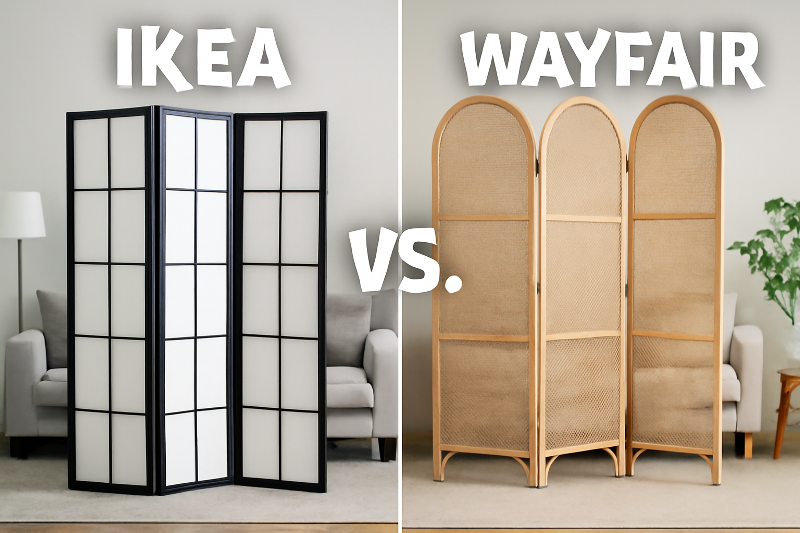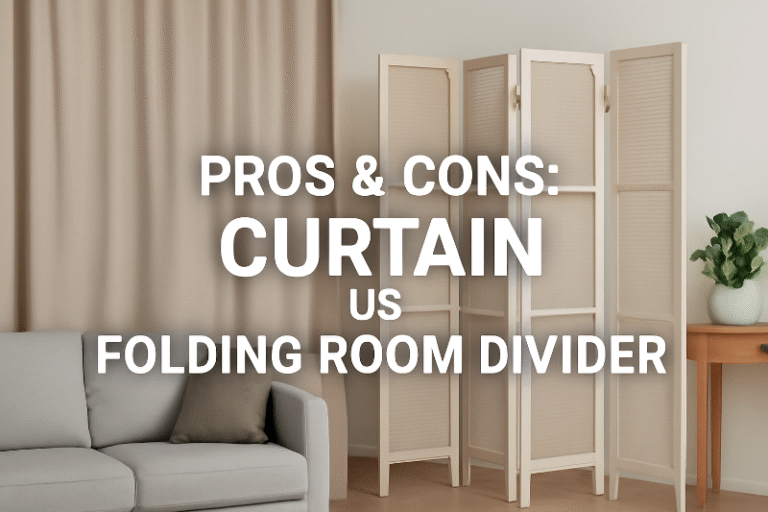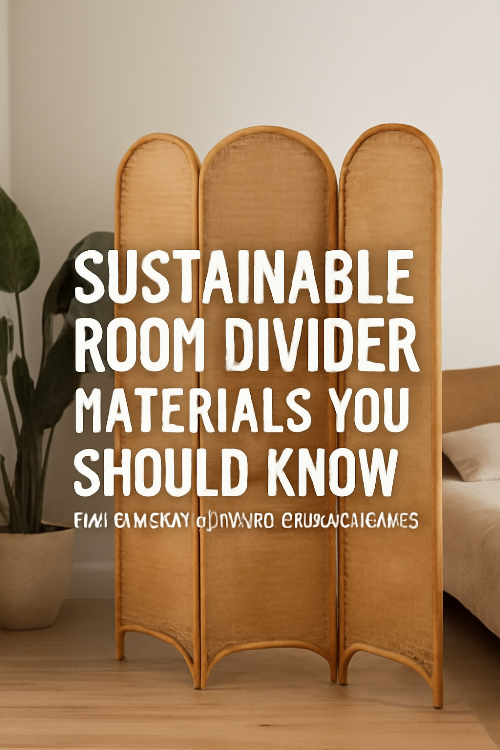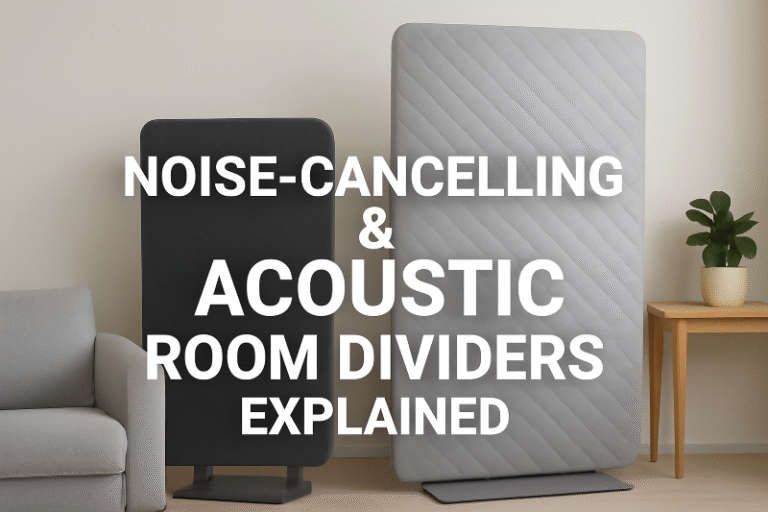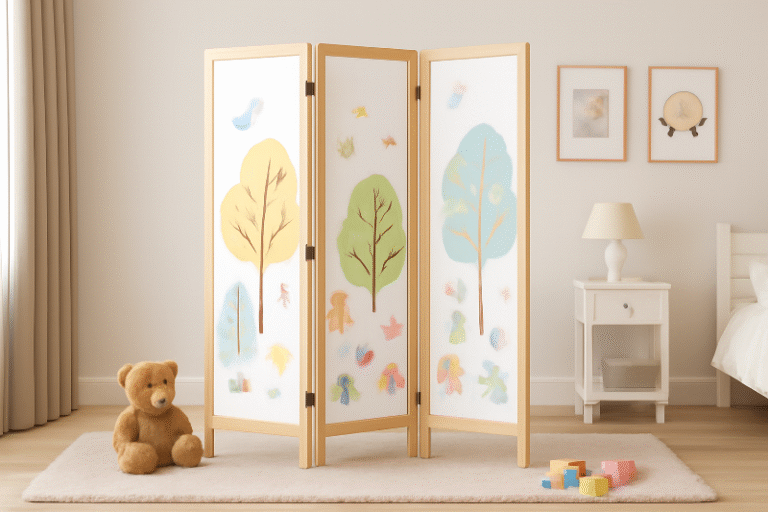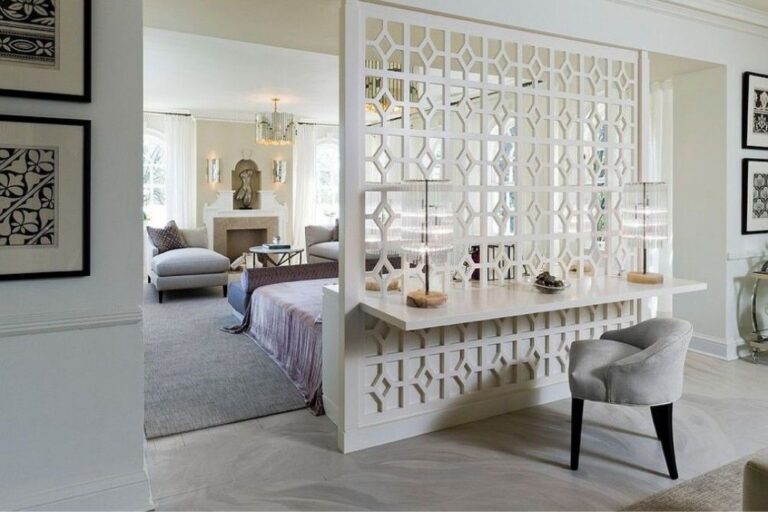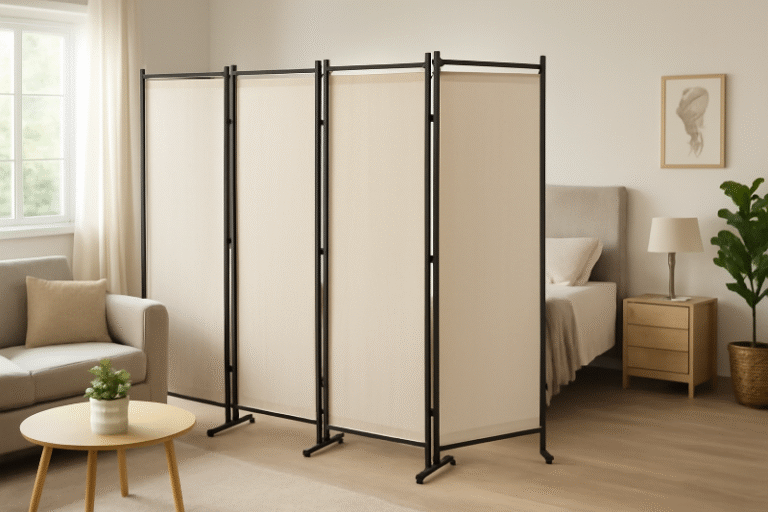When it comes to furnishing your home or apartment, room dividers are an excellent solution for creating functional spaces without the need for expensive renovations. Whether you’re looking to add privacy, create separate zones in an open-concept layout, or simply enhance the decor of a room, both IKEA and Wayfair offer a wide variety of room dividers. But which one is better? In this article, we’ll compare IKEA and Wayfair’s room divider offerings based on factors such as style, price, variety, quality, and customer experience to help you make an informed decision.
1. IKEA Room Dividers: Style & Functionality
IKEA has long been a go-to source for affordable, modern furniture with a minimalist Scandinavian design. The brand’s room dividers follow the same clean and functional aesthetic, focusing on simple and practical solutions. Whether you are furnishing a studio apartment, a shared living space, or an office, IKEA has various room divider options that suit almost any budget or style.
Types of Room Dividers at IKEA:
- Folding Screens: IKEA’s folding screens, such as the HÖRDA divider, offer versatility with their compact design and ability to fold away when not in use. The screens are made of wood and fabric, providing a balance of lightweight portability and sturdiness.
- Modular Shelving: IKEA’s KALLAX unit, while not strictly a traditional room divider, is often used as a divider due to its versatility and open shelving design. It also provides additional storage space, making it an excellent option for those with limited space.
- Curtains and Rods: For a more flexible and budget-friendly option, IKEA also offers ceiling-mounted curtain tracks and curtain dividers, ideal for creating temporary or movable barriers.
- Panel Dividers: IKEA offers panel dividers like RISÖR, which feature lightweight, eco-friendly bamboo panels.
Pros of IKEA Dividers:
- Affordable: IKEA’s room dividers are typically very affordable compared to other brands. The company’s focus on budget-friendly solutions means you can find stylish dividers without breaking the bank.
- Minimalist Design: IKEA room dividers are known for their clean, Scandinavian aesthetic, which suits modern homes and apartments.
- Modular Options: The ability to mix and match with other IKEA furniture, like the KALLAX shelving unit, makes IKEA dividers a highly customizable option for any space.
- Easy to Assemble: IKEA furniture is easy to assemble and usually comes with detailed instructions.
Cons of IKEA Dividers:
- Limited Variety: While IKEA offers affordable and functional options, its range of room dividers can sometimes feel limited in terms of materials, color options, and design styles.
- Not Always Sturdy: Some IKEA dividers, especially fabric-based or lightweight models, might not offer the level of durability needed for larger spaces or long-term use.
2. Wayfair Room Dividers: Variety & Quality
Wayfair, known for its massive selection of furniture and home goods, offers a much broader range of room dividers compared to IKEA. Wayfair’s options include everything from folding screens to permanent panel dividers, as well as customizable options to match various home decors.
Types of Room Dividers at Wayfair:
- Folding Room Dividers: Wayfair carries folding dividers in a range of materials, including wood, fabric, and metal. These dividers come in multiple panel sizes, from 3-panel to 6-panel models, which allow you to choose based on the size of the space you’re dividing.
- Modular Shelving and Storage Dividers: Similar to IKEA, Wayfair also offers modular shelving dividers, including some larger, more upscale options that double as storage units.
- Decorative Screens: Wayfair’s selection includes highly decorative room dividers, often featuring intricate designs or luxurious materials, such as mirrored panels or ornate metalwork.
- Curtains and Fabric Dividers: Wayfair offers a variety of curtain-based dividers, including ceiling-mounted curtain rods and tension rods, which can be a good solution for temporary or renter-friendly dividers.
Pros of Wayfair Dividers:
- Wide Selection: Wayfair offers a far more extensive variety of room dividers, including unique and luxurious options that may not be available at IKEA. This includes diverse designs, materials (wood, metal, glass, fabric, etc.), and sizes.
- Higher Quality and Durability: Wayfair tends to offer sturdier, higher-end options that are built to last, with some premium models made of heavy-duty materials like solid wood or metal.
- More Decorative Styles: If you are looking for a room divider that adds a decorative element to your space, Wayfair’s room dividers are often more visually striking, offering elaborate patterns or unique finishes.
- Customizable Options: Some of Wayfair’s room dividers come in customizable configurations, allowing you to adjust the number of panels or materials to fit your exact needs.
Cons of Wayfair Dividers:
- Price Range: While Wayfair offers affordable options, the majority of its high-quality room dividers tend to be on the pricier side. For premium materials and custom designs, you may find yourself spending significantly more than on IKEA’s offerings.
- Assembly Complexity: Some Wayfair dividers, particularly the larger, more intricate models, might require more complex assembly, which could be a downside for those who prefer simple, easy-to-assemble furniture.
- Shipping Fees: Depending on where you live, Wayfair’s shipping costs can sometimes add up, especially for larger or heavier dividers.
IKEA vs. Wayfair: Key Differences
| Factor | IKEA | Wayfair |
|---|---|---|
| Price | Generally affordable, great for budget shoppers | Offers both budget and premium options, but often pricier for higher quality |
| Style | Minimalist, Scandinavian, modern | Wide variety of styles, including decorative and luxurious designs |
| Quality | Generally good for the price, but some models may lack durability | Higher quality, especially for premium options, with sturdy construction |
| Variety | Limited, especially in terms of design and materials | Extensive variety, with numerous materials, sizes, and configurations |
| Assembly | Easy to assemble, straightforward | Can be more complex, especially for larger dividers |
| Durability | Suitable for light to medium use | Higher durability, especially for larger or more premium models |
| Customization | Limited customization options | More customizable options, especially for modular dividers |
Which is Better for You?
The choice between IKEA and Wayfair ultimately depends on your specific needs and preferences.
- Choose IKEA if:
- You’re looking for a budget-friendly solution.
- You prefer minimalist, modern Scandinavian designs.
- You need a quick, easy-to-assemble option.
- You’re furnishing a small space or apartment on a budget.
- Choose Wayfair if:
- You want a wider variety of styles and materials.
- You need higher-quality, more durable room dividers for larger spaces.
- You’re looking for a decorative element that complements your home’s aesthetics.
- You don’t mind spending a bit more for premium options or customization.
Conclusion
Both IKEA and Wayfair offer excellent room divider options, but each has its strengths. IKEA excels in affordability, simplicity, and minimalist design, making it ideal for budget-conscious shoppers or those looking for easy, practical solutions. On the other hand, Wayfair’s broad selection and premium quality options cater to those seeking more decorative or durable dividers with additional style choices. Depending on your budget, space, and style preferences, either store can provide the perfect room divider for your needs.
